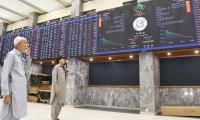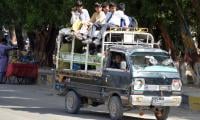The two alternating governments of Pakistan’s young leaders came to an end with the imposition of an emergency, on October 12, 1999. A long period of economic stability sans political freedom dawned upon the country.
Undoubtedly, it is much easier to focus on economic management and reforms in the absence of political pressures faced under a democratic government. At least for his first three years as president and chief executive, General Musharraf ran the country like it was a giant corporation. All cabinet members were selected largely on the basis of merit as determined by his lieutenants; most of them were empowered to run their affairs in accordance with the Rules of Business.
The process of economic reforms got a shot in the arm. Curiously, both the World Bank and the IMF took a great deal of time before coming to terms with the shock of a military takeover. The first standby agreement (SBA) was approved by the Fund in November, 2000, for a 10-month period, where almost all conditions – most notably an increase in petrol price (initially considered ‘suicidal’) – were front-loaded. A commensurate extension for Paris Club rescheduling was also accorded. A long-term and more concessional facility was promised afterwards. But 9/11 radically altered the environment and, at least in the short-run, economics was no longer an issue.
Mercifully, the military government did not introduce any radical ideas in the economic system (notwithstanding some about the National Reconstruction Bureau) and was generally in favour of continuing the reforms process, underway in fits and starts since 1988. The privatisation programme was a leading element of the economic agenda, unveiled by the government in December, 1999. A renowned businessman and chairman of the Crescent Group, Altaf M Saleem, was appointed chairman of the Privatisation Commission. Incidentally, three of his predecessors had faced incarceration. Both Syed Naveed Qamar and Khawaja Asif were going through internment under the military government (though both were eventually cleared). Saleem was a quiet and serious manager. He was not deterred to face the challenge or take tough decisions and was clear on the process being conducted under a well-defined law. Hence, a new law, the Privatization Commission Ordinance, 2000, was promulgated in September, 2000. After the election and subsequent resumption of limited democracy, there was continuity in policies. Saleem was succeeded by Dr Hafiz Sheikh, who had earned considerable experience regarding such programmes while working at the World Bank. He maintained the pace of privatisation established by his predecessor.
Thus, from 2000 to 2007 there was an uninterrupted focus on implementing a finely crafted privatisation policy that led to the completion of the most coveted transactions. The methods adopted included outright sale of 100 percent shares (fertiliser plants), divestment in tranches (banks’ shares), sale to a strategic investor (PTCL, HBL, UBL), and the subsequent sale of other tranches through the local and international capital markets. There was widespread interest and participation of local and foreign investors in the privatised assets and generally good values were realised.
All told, this phase saw 65 transactions in banking (UBL, NBP, HBL, MCB, Bank Alfalah), finance (ICP Funds), fertilisers (Pak-Saudi, Pak-Arab, Pak-American), chemicals (Khurram and Ittehad Chemicals), vegetable oils (Burma, EMI and Maqbool Ghee Mills), petroleum (National Petrocarbon), oil and gas exploration and production (Badin, Dhurnal, Ratana, Adhi and Turkwal oilfields, Pakistan Oilfields and OGDCL), refinery (NRL), gas (SSGC) and LPG companies (belonging to SSGC and SNGPL), cement (Thatta, Javedan, Mustehkam, Dandot and Associated), telecommunications (PTCL and CTI), power plants and utilities (Kot Addu and KESC), hotels (Falleti’s) and some other real estate belonging to public-sector companies were sold through a process defined under the law.
The transactions, before their completion, required a great deal of preparatory work such as cleaning the balance sheets, reducing the burden of excess employment through compensatory schemes (including closure of significant number of banks’ branches below a certain level of economics), putting in place the regulatory framework and generally improving the economic environment that induced interest in privatisation. It was a wholesome process supported by other policies, particularly the rising growth and price stability that prevailed during the period.
The assets sold fetched a phenomenal sum of Rs415.283 billion. In comparison to the entire value of sold assets which is Rs648.972 billion (which includes the proceeds from 2008-2017), the above effort is a staggering 64 percent. Evidently, what was accomplished in seven years significantly surpassed the performance of on-and-off efforts spread over nearly 22 years and six tenures of democratic governments.
We would hasten to add, that in no way is it being suggested that there is any alternative to democratic dispensation. But if democracy is supposed to be good for the people, it has to make huge improvements in its style of economic governance. Even today, public assets worth billions of dollars are inefficiently managed and poorly run, imposing sizeable losses on the public.
We also note that, although the programme was highly successful, it also attracted a great deal of criticism. For instance, the privatisation of UBL suffered an unusual situation after the normal bidding process was completed, and MCB was declared the winner but the second highest bidder, Bestway Group, increased its bid by a significant margin. The sanctity of the process required the asset goes to the highest bidder, but the authorities argued that public assets should get the highest sum, even if it means partially vitiating the process. The sale of KESC and PTCL were less than perfect, particularly the latter, where a significant part of the proceeds remains unpaid to this day and the performance of the corporation is also weak.
Then there was the unfortunate sale of Pakistan Steel Mills, which was struck down by the Supreme Court. Incidentally, some analysts suspect that this was the decision that sowed the seeds of distrust between the judiciary and the military government, leading to the removal of the chief justice, followed by the lawyers’ movement and ending in the ouster of the military government.
To be continued
The writer is a former finance secretary. Email: waqarmkn@gmail.com
A health worker administers polio vaccine drops to a child during a door-to-door polio vaccination campaign in Lahore,...
Armed militants of the banned Tehreek-e-Taliban Pakistan pose for a photograph in Orakzai Agency. —...
An aeroplane of the national flag carrier of Pakistan is seen in this file photo. — AFPWhile Pakistan considers...
Representational image of a graph depicting various variables. — APP/FileInitiated by the centre and fiercely...
In this picture taken on April 16, 2023, people throng a market area during shopping in Lahore. — AFPOne of the...
Honour crimes also target men. In Sikandar Ali Lashari vs The State, SHC upheld conviction passed by ATC for honour...







